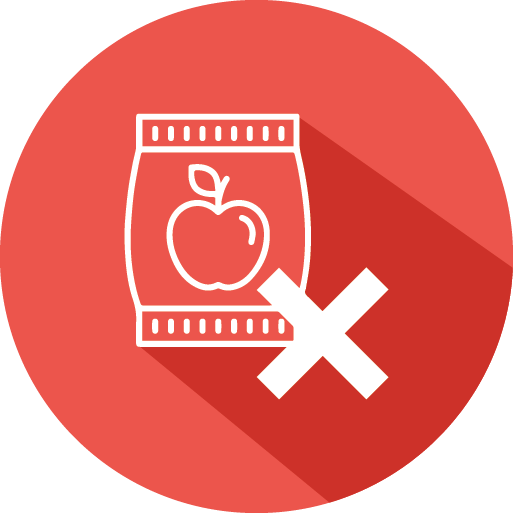
If there’s one thing that retail psychologists have learned over the years, it’s that choice isn’t always good. Few people will be excited by facing 382 options of laundry detergent. Alternatively, 382 options of craft beer may be exactly what pulls the customer into the aisle (it works for me), sparking the promise of hoppy exploration.
While choice can be alluring and liberating in some purchase contexts, it can be downright paralyzing in others.
This explains why in many studies, both in the real world and the lab, decreasing choice has been found to be beneficial for the bottom-line sales. (don’t worry, I won’t be citing the infamous ‘jam study’, which adorns the opening paragraph of so many articles on product assortment) On the other hand, many other studies still show the adage ‘the more the merrier’ to be true on the store shelf as well.
Clearly, whether choice is good depends on moderating factors such as product category, type of store and the shopper itself. Fortunately, Sethuramana et al. (2022) conducted a large-scale meta-analysis, providing insight into how these factors operate and intertwine to influence shopping outcomes. The researchers analyzed an impressive number of 177 studies obtained from 95 academic papers published during 1970–2021.
In this blog, we’ll sum up their most essential findings and discuss important practical implications for retailers.
Posted in Archive, Strategy, Conversion
published on Tuesday, 12 July 2022
How often do you research a product online before going to the physical shop to make your purchase? Most modern-day shoppers can no longer live without the so-called process of webrooming.
In fact, at least 74% of shoppers are webroomers. Almost half of webroomers do so because of a need for touch (NFT): the desire to feel, touch or smell a product before making the decision to buy.
Understanding such cross-channel customer experiences is a must for modern-day retailers. Get ready to find out just how going through online shopping windows and the need for touch influence customers’ in-store shopping behavior.
Posted in Archive, Conversion
published on Monday, 13 June 2022

In their battle for customer attention, food packaging designers are eager to implement techniques from psychology. It gives them an edge over their competitors in grabbing customer attention and increasing sales.
Especially in the aisles containing your typical vice products, most purchases are unplanned. This leaves a major role for on-pack visuals and claims to determine which products end up in our shopping baskets.
Over the years, consumer psychologists have unearthed many of these design techniques, which are often quite eloquent and subtle, such as:
- Getting the typography right (did you know that round fonts reinforce our perception of sweetness?)
- Cleverly arranging the various visual elements (did you know that bottom-heavy pack designs increases our perception of the amount of product we’ll be getting)
- Using nature’s principles of beauty (did you know that designs following the golden ratio are regarded more beautiful?)
As we focus on ever-more subtle design techniques, we may be overlooking the most powerful weapons of influence that are in front of our faces all along. A recent study by Huang et al., (2022) has thrown the spotlight on one such factors: image size.
Posted in Archive, Conversion
published on Tuesday, 31 May 2022

You may sometimes purposely forgo reading the front-of-package (FOP) labels on the packaging of food goods. The main reason could be to ignore the unhealthiness of the chosen option and let your tastebuds revel in its sugary glory. Other reasons include the difficulty to read and the misleading nature of the labels, leaving the consumer in a state of confusion. If the label is hard to understand, you won’t want to read it and you won’t make a healthy decision.
In this paper, the researchers focus on sugar content and evaluate a novel FOP label’s effectiveness on participants’ preference for the healthier option when presented with various food choices. This was achieved by proposing categories in terms of their simplicity: simple options with few ingredients (smoothies), mid-complexity options with a shortlist of ingredients (yoghurts), and complex options with many ingredients (ready meals). Along with increasing complexity, the sugar content also increases; the smoothie has less sugar than the yoghurt, which has less sugar than the ready meal.
These food options were proposed with the traffic light system or the sugar-spoon label, representing the number of teaspoons of sugar contained in the product. By comparing a standard traffic-light label system versus their invented sugar-spoon label, the researchers found that the participants’ choices were healthier when the product presented was of simple composition (vs complex composition) and adopted their sugar-spoon label (vs the traffic light label).
The study concluded that the sugar-spoon label is more effective at favoring the choice of low-sugar content food goods than the regular traffic light label.
What cognitive process allows for this healthier decision? Find out below.
Posted in Archive, Conversion
published on Tuesday, 17 May 2022

For the past years, an important new factor guides our decisions when buying different products: how sustainable, organic, or natural they are. Although on a large scale we produce and consume a lot of synthetics (foods and drinks, care products, clothes) we crave to get back to the bare essentials.
People wish to experience more of the dewy grass and less of the concrete dust. In recent years, we have seen a surge of products and services that harvest the natural, the organic, and the minimal. Those that originate from plants, animals, or humans are considered to be natural (Rozin, 2005).
Sustainable living is not only a modern lifestyle choice but a necessity we embrace as individuals and as businesses. We are willing to drive further, pay more, and put more effort into buying products that are undisruptive to the environment and our bodies. Well, as much as possible anyway. But just as we are willing to put more effort into acquiring natural products, we are more likely to ignore them if they come in a package. Not only in a store but when we shop online too. Do you want to know why?
Posted in Archive, Conversion
published on Monday, 21 March 2022





